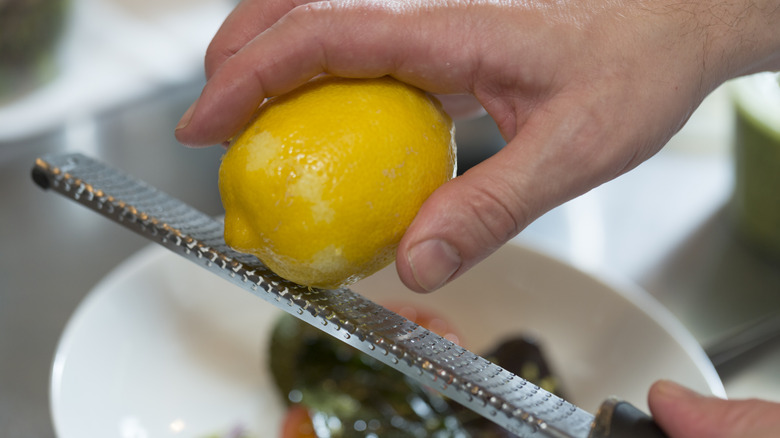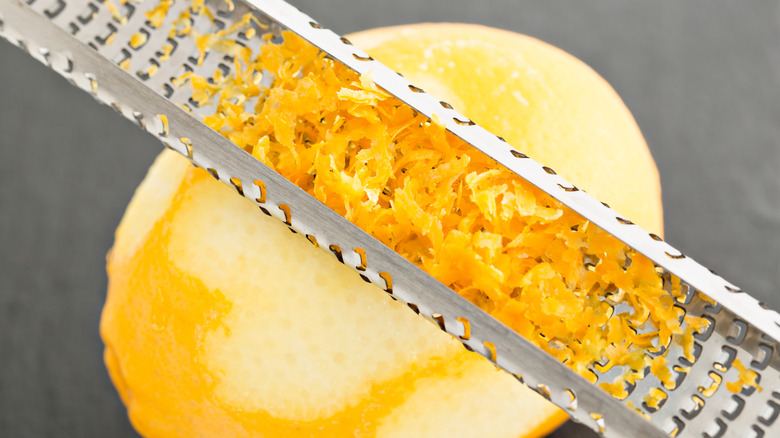You've Probably Been Zesting Citrus Wrong Your Whole Life
Zesting citrus can leave you questioning your abilities in the kitchen. It can't possibly be harder than using a cheese grater, yet you nearly nick your knuckles on every sharp edge and end up grating way too much of the white pith by mistake. If the lemon keeps slipping out of your hands and the yellow shreds are flying all over the countertop, how are you supposed to make that delicious microwavable lemon curd? For a mess-free and efficient zesting technique, flip the microplane so that the concave underside faces you and pull the handle toward you as you grate.
You'll be glad to hear that this struggle is a universal one and has nothing to do with a lack of skill. Instead, it showcases a flaw in the traditional way of using a grater, one that even professional cooking shows rarely highlight. Zesting involves grating the outer layer of citrus skin into tiny, dust-like shreds. These bits can add incredible flavor to baked goods, savory cooking, or even brighten a cup of coffee. With this more modern technique, you can say goodbye to the days of finding flakes of orange peel on the opposite side of the counter and hello to a punchier flavor with less mess.
How to properly use a rasp-style grater on citrus
Since zesting involves using the outer layer of a fruit, thoroughly wash your produce to remove debris and dry it off well. Turn the rasp-style grater upside down, place the base at the top of the fruit, and pull the grater towards you in one fluid motion, repeating this step until the colorful rind is stripped from the fruit. Using the microplane this way allows you to collect the zest directly on the grater itself, preventing it from snowflaking across the kitchen. The oil-rich zest can go straight into your vinaigrette or cookies instead of falling on your countertop or cutting board.
One of the biggest issues with zesting in the traditional approach is that you're essentially working in the dark, with no real way to see how much rind you've stripped away or ability to aim where those pieces fall. The white, inner layer of citrus skin is known as the pith, which can make the citrus zest taste bitter and harsh if it's accidentally included.
Flipping that grater upside down gives you a better view of how much rind you're grating before you hit the pith. Pulling the grater in a single stroke also ensures you don't overwork the same section, reducing the risk of grating that unpleasant white portion. Now that you've mastered this new zesting technique, you'll have no fear quickly grating a little lemon zest to add a burst of citrus to your popcorn.

